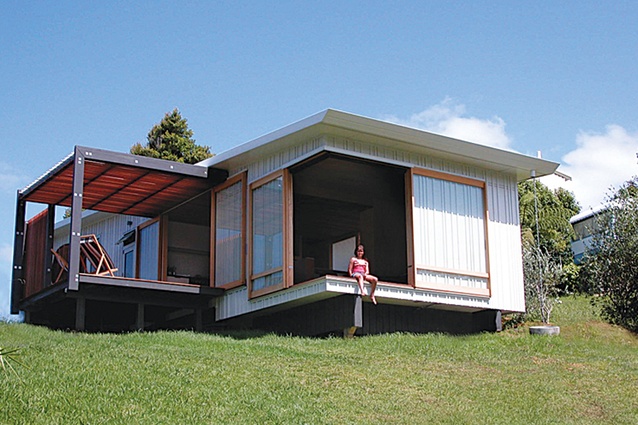Future of New Zealand’s prefab industry
According to David Suzuki’s recent book The Legacy, we have no time to waste in cleaning up our act and attitudes to our world. So how does this translate into prefab housing? Through innovative approaches to resource use, material waste minimisation and life cycle costing. This means taking on board annual running costs, transport costs to site and building time frames. Innovative prefab approaches to delivering a house mean building in chunks, panels or components, with the potential to assemble some parts yourself.
Research and Design (R&D) is a must-have in any industry to keep up with, or stay ahead of, the market. In the 1950s, collaborations between the New Zealand government and the building industry enabled progress in tackling housing issues with some of the tangible results seen in the development of the pre-nailed roof truss and wall frame, both of which are now part of New Zealand’s traditional construction toolkit.
Cross-fertilisation of skills and technologies between industry sectors is another way to encourage innovation, as seen by the current use of computer-controlled techniques from the manufacturing industry being applied to design and construction. The new buzz words, ‘Building Information Management’ and ‘inter-operability’, hint at a more collaborative digital future where three-dimensional (3D) models can be shared and worked on in real time among a range of stakeholders. On the edge of handcraft and computer-control are CNC routed, laser cut and 3D-printed project models.
Right now, these tools are bringing experimentation and R&D to life at tertiary institutes, in the design profession and in collaborations between academia and industry. There are many research projects, design studios and design-and-build programmes at universities overseas. Prefab technologies are incorporated into university design courses in the United States, Europe and United Kingdom. Leading American architecture schools such as Harvard, Yale, Massachusetts Institute of Technology and Columbia all offer design-based studios on manufactured housing. Architects who combine practice with teaching to develop innovative prefab prototypes head many of these studios. Designing and constructing prototypes not only educates students in design-and-build methods but also educates the wider public through exhibitions and events. In New Zealand, we also have some thought-provoking projects coming out of academia and industry collaborations.
For three years, Unitec has ran Studio 19, an architecture programme led by architect Dave Strachan of Strachan Group Architects. The programme is run on a very tight time frame, using mainly standard construction methods to build a transportable or complete prefabricated building at Unitec. The first two years of the programme focused on producing separate living and sleeping modules for a Northland property, which was subsequently auctioned for a national televised charity fundraiser, and in 2010, the studio designed and built a bach that was transported to its Onemana beach site in the Coromandel. Innovative construction systems founded by the programme include laminated veneer lumber, new types of timber joinery and a structurally insulated metal panel roof system.
Down in Wellington, staff and students at Victoria University’s School of Architecture are currently working on an entry into the international Solar Decathlon housing competition. The competition, which is held in October of this year, over a period of three weeks, involves 20 teams fiercely competing to design, build and operate a solar-powered house that is cost-effective, energy-efficient and attractive. These teams spend almost two years creating houses that are put through a series of 10 contests to evaluate their aesthetics and measure their performance. The houses are also designed for ease of assembly and mobility. It is more than 13,500 kilometres from Wellington to Washington, so the complete bach-like house will be prefabricated and transported in modular sections to be combined on site in one week.
It’s not just the students that are having all the fun. Pockets of industry and a number of individual professionals are pushing the boundaries and exploring new ways of delivering housing that is interactive and enduring. Wellington architect Chris Moller’s Click-raft project explores hands-on DIY opportunities. According to Moller, “Click-raft is an inexpensive, minimal fabrication architecture developed from first principles where each component is reduced to its bare essentials.” It is an interactive open-system of notched plywood cut-outs that can be joined together, much like childhood toys such as Lego and Meccano. The combination of this playful approach and the system’s flexibility offers infinite built structures that are then clad in options such as a photovoltaic-powered louvres or more traditional means.
These inspiring examples show the breadth of activity happening at the forefront of prefab in New Zealand. A coordinated overview is being provided through a national prefab exhibition at Puke Ariki Museum in New Plymouth in 2012. It is hoped that this exhibition will make a substantial change to re-shape any historical misperceptions about prefab – once thought of as cheap, flimsy and temporary, now potentially a quicker, cheaper and higher-quality construction alternative.










